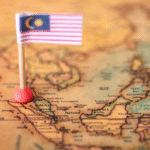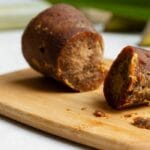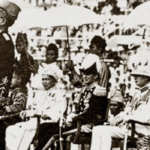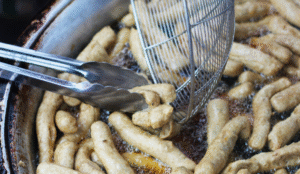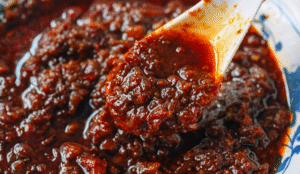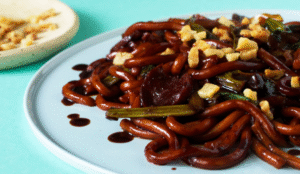Top 5 Sabah Food You Must Try – A Taste of Borneo
When you think of Malaysian cuisine, Penang’s char kuey teow or Melaka’s nyonya dishes might come to mind. But venture east to Sabah — a land of vibrant cultures, crystal-clear seas, and lush mountains — and you’ll discover an entirely different culinary world waiting to be explored. Sabah food is a reflection of its people: diverse, flavorful, and deeply connected to nature. Every dish carries a story of tradition, community, and the region’s rich natural resources.
Whether you’re wandering through bustling markets in Kota Kinabalu or dining at seaside cafés with views of Mount Kinabalu, the food here never fails to impress. From tangy raw fish salads to smoky noodles, each plate captures the spirit of Borneo. Here are the Top 5 Sabah food you absolutely must try when visiting this culinary paradise.
Frequently Asked Questions (FAQ)
1. What is Sabah's famous food?
One of the most famous Sabah foods is a reflection of its multicultural heritage and coastal bounty. Among the most iconic dishes are Hinava, a Kadazan-Dusun delicacy made from raw fish cured with lime juice, chili, and ginger, and Tuaran Mee, a signature noodle dish unique to the town of Tuaran. Another highlight is Sabah’s incredible seafood—especially in Kota Kinabalu—where fresh catches like tiger prawns, crabs, and groupers are cooked to perfection at local hawker stalls or high-end restaurants. What makes Sabah food truly special is its balance of freshness, spice, and cultural depth — a combination that tells the story of the land and sea.
2.What is Hinava, Sabah’s traditional food?
Hinava is one of the most well-known Sabah foods, often compared to ceviche. It’s a raw fish salad typically made from mackerel or tenggiri, marinated in lime juice, bird’s eye chili, shallots, and grated ginger. The acidity from the lime “cooks” the fish naturally, creating a refreshing and tangy flavor. This dish holds deep cultural significance among the Kadazan-Dusun people and is often served during festive events such as Kaamatan (Harvest Festival). Whether you try it in a Sabah café or at a home-cooked gathering, Hinava is an unforgettable part of local culinary identity.
3. What seafood is Kota Kinabalu known for?
Kota Kinabalu (KK) is a seafood lover’s paradise. Known for its vibrant waterfront markets, visitors can enjoy fresh lobsters, shellfish, and crabs caught the same day. The seafood KK Sabah experience is more than just a meal—it’s a cultural adventure. Locals recommend visiting the Waterfront Seafood Night Market or Welcome Seafood Restaurant, where you can pick your own fish and have it cooked to your liking. Whether grilled, steamed, or buttered with garlic, the freshness of KK seafood defines why Sabah is considered one of Malaysia’s best destinations for ocean dining.
4. Is Tuaran Mee a popular dish?
Absolutely! Tuaran Mee is one of the most beloved noodle dishes in Sabah and a must-try for any visitor. Originating from the town of Tuaran, these egg noodles are fried until slightly crispy and tossed with pork, vegetables, and egg rolls. Many locals and tourists enjoy it with a side of sambal or chili vinegar. It’s often found in coffee shops and Sabah café menus across the state, representing the perfect comfort Sabah food that locals take pride in.
5. What is café Sabah known for?
A Sabah café offers more than just coffee—it’s an experience that blends local hospitality with unique flavors. Cafés in Kota Kinabalu often highlight local ingredients, such as Tenom coffee beans, pandan-infused cakes, and even fusion dishes inspired by Sabah food culture. Some cafés serve light versions of traditional dishes like Hinava or Tuaran Mee, allowing both locals and travelers to enjoy authentic flavors in a relaxed, modern setting. Whether you’re exploring Gaya Street or the coastal cafés near the city, you’ll find a welcoming vibe and plenty of local delights to savor.
5. Bambangan – The Exotic Wild Mango of Borneo
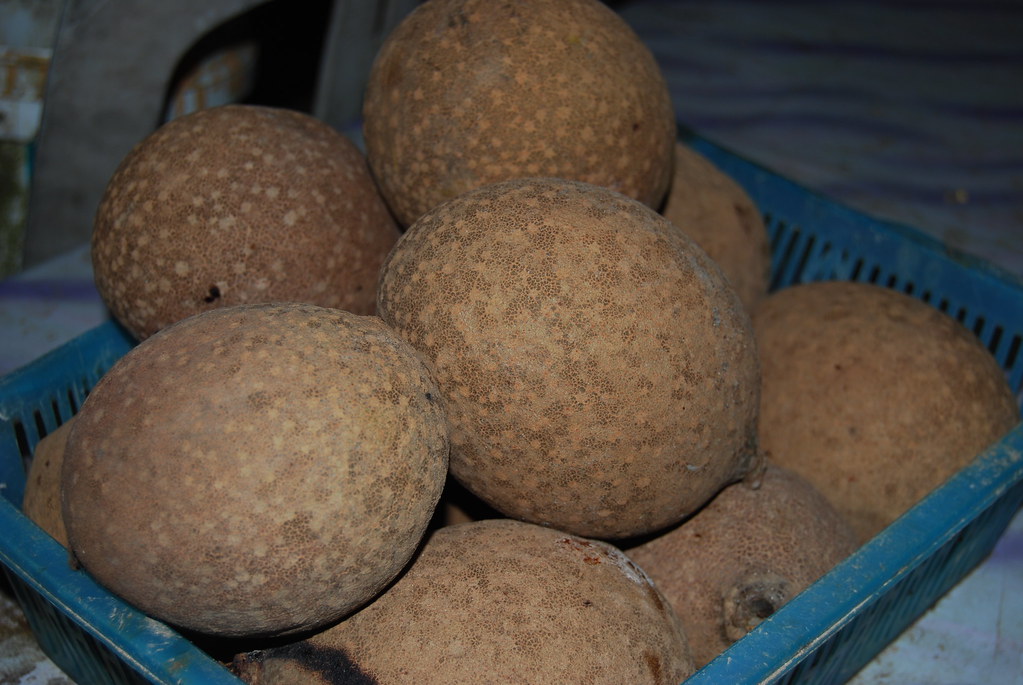
For something unique Sabahan, try bambangan, an exotic fruit native to Borneo. Often referred to as the “wild mango,” it’s commonly used in pickles or cooked dishes. The fruit has a thick brown skin, and its flesh carries a sweet-sour flavor that pairs beautifully with spicy and savory dishes.
Local families typically make bambangan pickle, combining the fruit with chili and grated seed for added texture. It’s tangy, pungent, and addictive — a staple at many traditional meals. Beyond being a flavorful side, bambangan also symbolizes the connection between Sabahans and their natural environment.
If you’re exploring local Sabah food, don’t miss the chance to buy a jar of bambangan pickle to take home — it’s a perfect souvenir for anyone wanting to remember the authentic taste of Sabah food.
4. Seafood in Kota Kinabalu – Ocean Fresh and Unforgettable
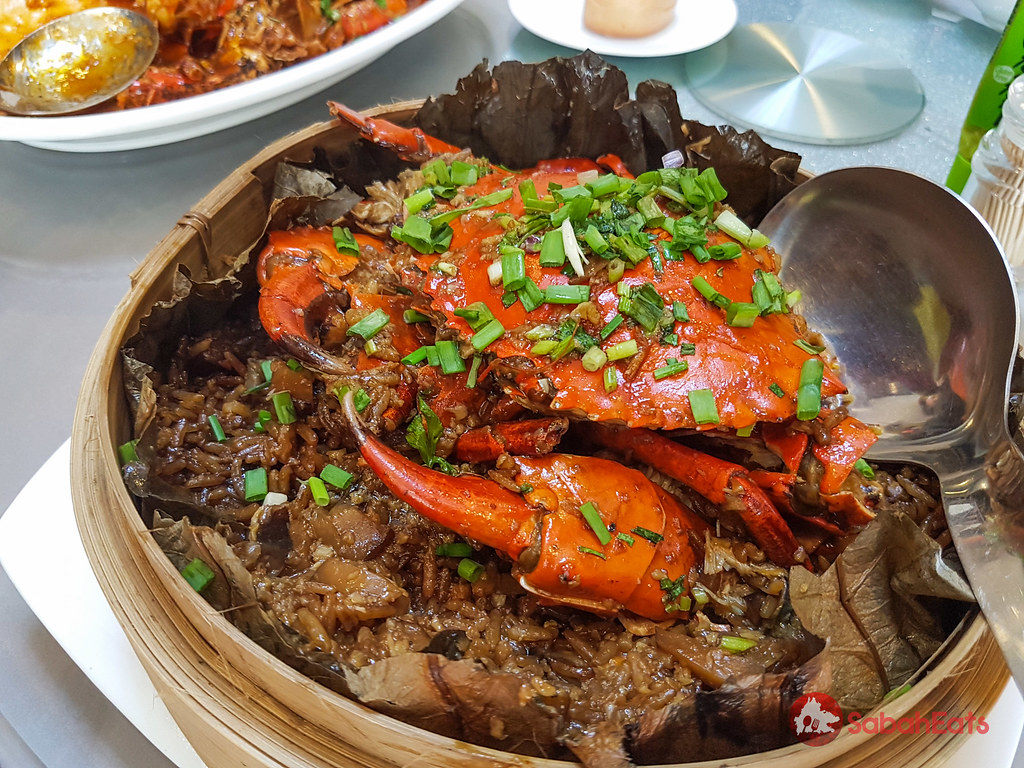
No culinary trip to Sabah would be complete without indulging in its world-famous seafood. The coastline around Kota Kinabalu is teeming with marine life, and local restaurants serve some of the freshest seafood in Malaysia. From grilled tiger prawns to butter crabs and steamed fish, seafood KK Sabah is a feast you won’t forget.
What makes Sabah’s seafood stand out is its unbeatable freshness. Many restaurants allow diners to pick live fish or lobsters straight from aquariums before cooking them to order. Whether you choose a simple steamed grouper with soy sauce or a spicy sambal squid, every bite bursts with ocean flavor.
The Kota Kinabalu Waterfront, Todak Waterfront, and Kampung Air night markets are top spots for seafood lovers. You can dine under the stars with waves gently hitting the shore — a truly memorable experience that highlights why Sabah food is so beloved across Malaysia and beyond.
3. Ngiu Chap – The Beef Lover’s Dream
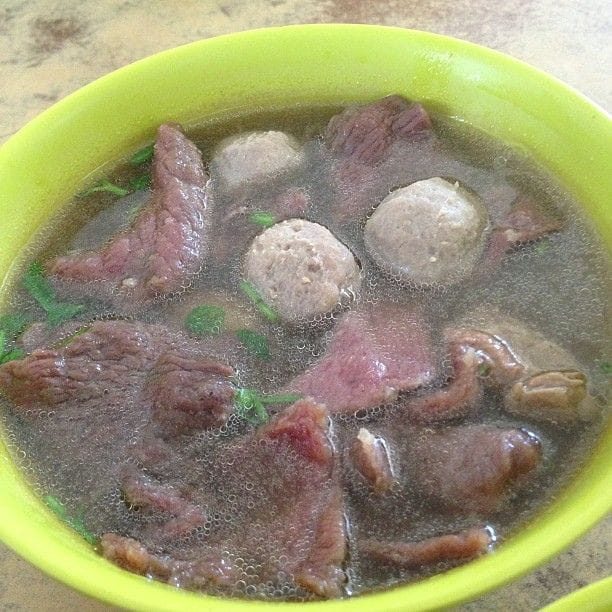
Next on the list of Sabah food is ngiu chap, a comforting bowl of beef noodle soup beloved by Sabahans. The term “ngiu chap” means “mixed beef” in Hakka, and that’s exactly what you get — a rich broth simmered with a combination of beef slices, tripe, tendon, and meatballs.
What makes Sabah’s version special is its deep, savory broth, which is slow-cooked for hours to draw out maximum flavor. Paired with rice noodles and served with chili and soy sauce, this dish is both hearty and soul-warming.
You’ll find ngiu chap in almost every food court and noodle shop in Kota Kinabalu. It’s a favorite breakfast for locals and a must-try for visitors who love strong, meaty flavors. Many cafés in town even offer fusion takes on the dish, combining modern presentation with traditional taste — another great example of how Sabah food evolves while preserving its roots.
2. Tuaran Mee – A Noodle Dish with a Twist
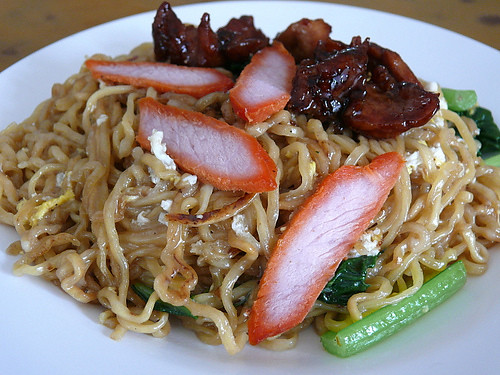
Originating from the town of Tuaran, near Kota Kinabalu, tuaran mee is a household name across Sabah. What sets it apart from regular noodles is the preparation method: the egg noodles are first fried until slightly crispy, then tossed with egg, soy sauce, and roasted pork or seafood. The result is a rich, smoky dish with a chewy texture that’s incredibly satisfying.
Many locals enjoy tuaran mee for breakfast, though it’s equally popular throughout the day. The aroma alone — the scent of noodles fried on high heat — is enough to make anyone hungry. While every cook adds their personal flair, the best versions include handmade noodles, giving a distinct bite and elasticity that machine-made versions can’t match.
For those craving local flavors with a comforting touch, tuaran mee represents the heart of everyday Sabah food — simple, flavorful, and made with love.
1. Hinava – The Iconic Kadazan-Dusun Delicacy
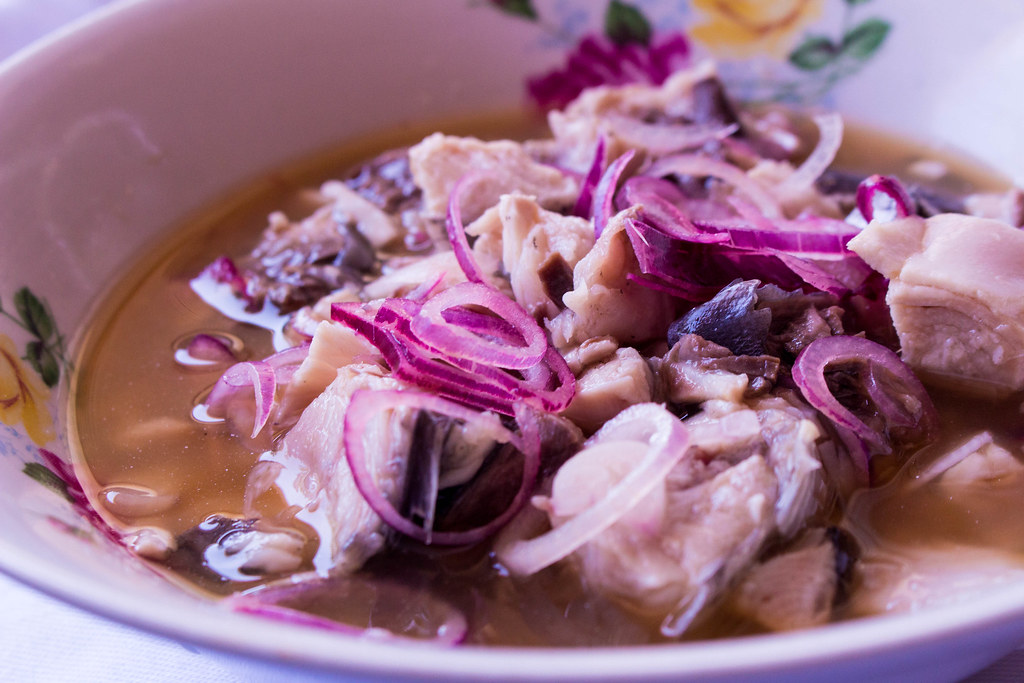
If there’s one dish that truly represents Sabah food, it’s hinava. This traditional Kadazan-Dusun delicacy is often served during celebrations and festivals. Made with raw mackerel marinated in lime juice, ginger, red onions, and bird’s eye chili, hinava offers a refreshing yet fiery flavor that awakens your senses.
The acidity of the lime “cooks” the fish, giving it a tender texture, while the chili and ginger bring a bold kick. Some versions even include grated bambangan seed (a local wild mango) for a nutty twist. Hinava is often compared to ceviche, but it’s uniquely Sabahan — less sour, more aromatic, and deeply rooted in indigenous culture.
You’ll find the best hinava at local tamu (markets) or served at traditional Kadazan-Dusun homes during festive seasons like Kaamatan. For adventurous foodies, it’s the perfect introduction to authentic Sabah food and its connection to local traditions.
Exploring More of Sabah food, Culinary Treasures
While the Top 5 dishes give you a strong introduction to the richness of Sabah food, there’s so much more waiting beyond the first bite. The culinary scene in Sabah is like a living map of its people — from the Bajau to the Kadazan-Dusun, Murut, and Chinese communities — each leaving their mark on every meal.
Indigenous Flavors: A Taste of Tradition
If you venture deeper into local markets or join a community Sabah food festival, you’ll notice that many recipes in Sabah are built around locally sourced ingredients — wild herbs, river fish, and mountain vegetables. These ingredients tell stories of the land and sea. For example, tuhau, a type of wild ginger, has a sharp aroma that surprises many visitors but is beloved by locals. It’s often pickled and served as a side dish or used to flavor grilled meats.
Another favorite is bosou, a traditional Kadazan-Dusun fermented fish dish. It’s made using freshwater fish, rice, and salt, left to ferment for several days until it achieves a sour, savory depth that pairs beautifully with plain rice. These dishes might not be found in typical restaurants, but if you explore small family-run eateries or attend cultural festivals, you’ll get to taste the soul of authentic Sabah food.
The Café Scene: Modern Twists on Traditional Tastes
In recent years, Sabah cafe culture has blossomed across cities like Kota Kinabalu. These modern cafés offer creative takes on local favorites — imagine sipping a frothy cappuccino alongside a plate of pandan waffles topped with coconut ice cream or enjoying local fusion pasta infused with sambal.
Many cafés also highlight local produce, from Tenom coffee beans to cocoa sourced from Ranau. Some even serve hinava-inspired poke bowls, merging fresh raw fish with tropical fruits and sauces. The combination of modern presentation and traditional flavor creates a beautiful balance that appeals to both locals and tourists.
When you walk into a Sabah cafe, you’ll feel the blend of cultures that define the region — Western-style interiors paired with the warmth of Malaysian hospitality. These spaces have become community hubs where young locals and travelers connect over good food, art, and music.
The Seafood Capital: Beyond Kota Kinabalu’s Waterfront
If you think you’ve already experienced seafood KK Sabah just by dining at the famous waterfront, think again. The coastline of Sabah stretches for hundreds of kilometers, and every district offers a different seafood experience.
In Sandakan, for instance, seafood is known for its freshness and variety — from butter prawns and grilled stingray to steamed groupers caught hours before they reach your plate. In Semporna, you can dine on floating restaurants overlooking turquoise waters, savoring chili crabs and squids while watching the sunset. Meanwhile, Kudat, at the northern tip of Borneo, is where you can enjoy seafood cooked the Bajau way — marinated in turmeric and grilled over charcoal.
What makes Sabah food especially unique is the emphasis on freshness. Many eateries will let you handpick your fish or prawns directly from tanks, ensuring your meal is as fresh as possible.
Culinary Tourism: A Journey Through Taste
Food is one of the best ways to explore Sabah. Culinary tours are growing in popularity, offering travelers a chance to visit local markets, learn about native ingredients, and even join cooking classes. You might find yourself making hinava with a Kadazan-Dusun host or mastering the art of stir-frying tuaran mee at a family-run stall.
One unforgettable experience is joining a night market food tour in Kota Kinabalu. The air fills with the aroma of grilled satay, smoky noodles, and sweet coconut pancakes. It’s a lively atmosphere that truly captures the spirit of Sabah — a place where food, laughter, and culture come together.
Local Drinks and Desserts to Complete the Experience
No journey through Sabah food would be complete without exploring the region’s beverages and desserts. Try Tenom coffee, often called the “Sabah Highland Coffee,” known for its smooth, nutty flavor. Or sip on Sabah tea, grown in the cool mountain climate of Ranau, offering a gentle aroma and mild taste.
For desserts, kuih cincin (ring-shaped cookies) and penjaram (honeycomb pancakes) are traditional favorites that add a sweet ending to your culinary adventure. Many cafés even reinvent these classics into modern pastries or fusion desserts.
A Feast for the Senses
What makes Sabah’s cuisine so captivating isn’t just the taste — it’s the story behind every meal. Each dish reflects centuries of migration, trade, and tradition. Whether you’re eating a humble bowl of noodles or a lavish seafood spread, you’re experiencing the diversity and hospitality of the people.
So next time you plan your trip, don’t just visit for the islands and mountains — make room in your itinerary to taste the real Sabah. Walk into a small Sabah Cafe, share a meal with locals, or dive into the bustling seafood stalls by the sea. Every bite tells a story, and every flavor invites you to return for more.
Beyond the Plate: Experiencing Sabah Through Food
When you explore Sabah food, you’re not just tasting ingredients — you’re discovering stories of heritage and identity. Every market, café, and street stall across the state has something to teach you about local life.
One of the best ways to start is by visiting the Kota Kinabalu Central Market, where the air buzzes with the smell of grilled fish, roasted peanuts, and fresh herbs. Here, locals gather early to sell fruits, vegetables, and homemade condiments. You’ll find jars of sambal, bottles of rice wine, and even freshly made hinava, all sold with proud smiles from vendors who’ve perfected their recipes for generations.
Walk outside, and you’ll find small food stalls serving tuaran mee sizzling in woks, the sound of noodles hitting the hot pan echoing through the morning air. Stop by a Sabah cafe nearby, where young baristas brew local coffee with a passion that rivals any city in the world. Many cafés here serve local breakfast sets — kaya toast, half-boiled eggs, and Tenom coffee — but with a twist, combining both nostalgia and innovation.
If you’re a seafood lover, then your journey isn’t complete without returning to seafood KK Sabah restaurants after sunset. The night markets come alive with soft lights reflecting off the ocean, and tables fill quickly with locals and tourists sharing plates of spicy crabs, butter prawns, and grilled squid. It’s not just about eating — it’s about connection, laughter, and savoring every moment by the sea.
Food tours across Sabah are also becoming a major attraction. Some even take visitors into villages to learn traditional cooking techniques — pounding spices, marinating meats, and wrapping food in banana leaves. You can learn to make hinava the way Kadazan-Dusun families have done for centuries or cook tuaran mee with local hawkers who have been running their stalls for decades. These hands-on experiences transform simple meals into lasting memories.
What truly sets Sabah food apart is how it celebrates community. Every meal, whether in a modern Sabah cafe or a humble seaside stall, invites people to gather, share, and bond. Food becomes a bridge that connects generations and welcomes travelers into the heart of Borneo culture.
So when you plan your next Sabah adventure, let your curiosity lead you beyond sightseeing — taste, talk, and experience the warmth behind every dish. Because once you’ve shared a table in Sabah, you’ll understand why the people say: “To eat here is to know our story.”
Conclusion: Taste the True Essence of Sabah
From hinava to tuaran mee, and from traditional flavors to modern café creations, Sabah food showcases the best of Borneo’s cultural and natural diversity. Each dish is a celebration of the people, the land, and the sea — a living expression of what makes Sabah so unique.
If you’re a traveler seeking authentic experiences, let your taste buds guide the way. Explore, eat, and enjoy — because in Sabah, every meal is more than just food; it’s a journey into the heart of Malaysian heritage.
Posts you might be interested
-
 The Evolution of Malaysia Language/0 Comments
The Evolution of Malaysia Language/0 Comments -

-

